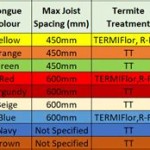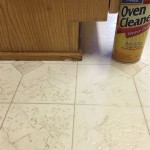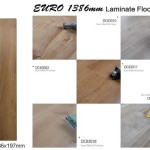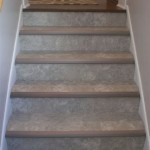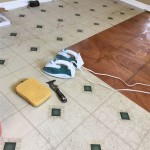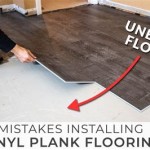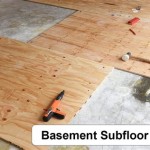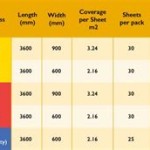How To Remove Carpet Glue From Wood Floors
Removing carpet glue from wood floors is a common challenge faced by homeowners undertaking renovations or restoring older properties. Carpet adhesive, often stubborn and persistent, can leave a sticky, unsightly residue that detracts from the natural beauty of the wood. Successfully eliminating this adhesive requires a methodical approach, careful selection of appropriate tools and solvents, and patience to avoid damaging the underlying wood floor.
Multiple factors can influence the difficulty of removing carpet glue. The type of adhesive used, the length of time it has been adhered to the floor, and the type of wood flooring itself all play a role. Older, more aggressive adhesives may require more intensive methods and longer soaking times. Similarly, softer woods may be more susceptible to damage from harsh chemicals or aggressive scraping.
Before commencing any removal process, it is crucial to identify the type of wood flooring. Hardwoods, such as oak, maple, and hickory, are generally more durable and can withstand more rigorous cleaning methods. Softwoods, like pine and fir, are more easily scratched and damaged and require a gentler approach. Understanding the wood type will guide the selection of appropriate solvents and tools.
Additionally, it is essential to determine the type of adhesive used. Some adhesives are water-based, while others are solvent-based. This information will help in choosing the most effective removal method. Water-based adhesives may soften with the application of warm water and soap, whereas solvent-based adhesives may require the use of mineral spirits or adhesive removers.
Preparing the Work Area
Proper preparation is vital before starting the glue removal process. This involves protecting the surrounding areas and ensuring adequate ventilation. Begin by removing all furniture and other obstructions from the room. Cover any adjacent flooring surfaces with drop cloths or plastic sheeting to prevent accidental damage or staining from solvents.
Ventilation is crucial, especially when working with solvents. Open windows and doors to allow fresh air to circulate. Consider using a fan to further improve ventilation. If using strong solvents, wearing a respirator mask is advisable to protect against inhaling harmful fumes.
Before applying any solvent to the entire floor, test it in an inconspicuous area to ensure it does not damage or discolor the wood finish. Choose a small, hidden spot, such as under a piece of furniture or in a closet. Apply the solvent according to the manufacturer's instructions and allow it to sit for the recommended time. Check for any adverse reactions, such as discoloration, softening of the wood, or lifting of the finish. If any of these occur, discontinue use of that solvent and try a different approach.
Gather all necessary tools and supplies before beginning. This will streamline the process and prevent interruptions. Essential tools include: a scraper (plastic or metal depending on the wood's durability), a heat gun (optional), various solvents (mineral spirits, adhesive remover, warm water and soap), a spray bottle, cloths or rags, a sponge, a bucket, and safety gear (gloves, respirator mask, eye protection).
Methods for Removing Carpet Glue
Several methods can be employed to remove carpet glue from wood floors, ranging from simple household solutions to more specialized solvents and tools. The effectiveness of each method depends on the type of adhesive, the type of wood, and the length of time the glue has been adhered.
One of the simplest methods involves using warm water and soap. This works best for removing water-based adhesives that have not been adhered for a long period. Mix warm water with a mild dish soap in a bucket. Dip a sponge or cloth into the soapy water and apply it to the affected area. Allow the water to soak into the glue for several minutes to soften it. Then, use a plastic scraper to gently lift the softened glue. Repeat the process as needed until the glue is removed. After removing the glue, wipe the area with a clean, damp cloth to remove any soap residue.
For more stubborn adhesives, mineral spirits can be effective. Mineral spirits are a solvent that can dissolve many types of adhesives. Apply mineral spirits to a clean cloth and wipe the affected area. Allow the mineral spirits to sit for several minutes to penetrate the glue. Then, use a plastic or metal scraper to gently lift the softened glue. Be careful not to gouge the wood. Mineral spirits are flammable, so ensure proper ventilation and avoid open flames.
Commercial adhesive removers are specifically formulated to dissolve carpet glue. These products often contain stronger solvents than mineral spirits and may be more effective for removing stubborn adhesives. Follow the manufacturer's instructions carefully when using adhesive removers. Apply the remover to the affected area and allow it to sit for the recommended time. Then, use a scraper to lift the softened glue. As with mineral spirits, ensure proper ventilation and wear appropriate safety gear when using adhesive removers.
A heat gun can be used to soften the adhesive, making it easier to scrape off. Hold the heat gun several inches away from the floor and move it slowly back and forth over the glue. Be careful not to overheat the wood, as this can cause damage. Once the glue is softened, use a scraper to lift it off the floor. This method is most effective when used in conjunction with a solvent.
Post-Removal Care and Maintenance
Once the carpet glue has been successfully removed, the wood floor may require further treatment to restore its original appearance. This may involve cleaning, sanding, and refinishing the floor.
Begin by thoroughly cleaning the floor with a wood floor cleaner. This will remove any remaining adhesive residue and prepare the floor for further treatment. Follow the manufacturer's instructions for the cleaner and ensure proper ventilation.
If the glue removal process has damaged the finish of the floor, sanding may be necessary. Start with a coarse-grit sandpaper to remove any imperfections and then gradually move to finer grits to smooth the surface. Be careful not to sand too deeply, as this can damage the wood. Consider hiring a professional floor refinisher if you are not comfortable sanding the floor yourself. Following the sanding, it is important to remove all dust and debris with a tack cloth.
After sanding, the floor will need to be refinished to protect the wood and restore its original shine. Apply several coats of polyurethane or another wood floor finish, following the manufacturer's instructions. Allow each coat to dry completely before applying the next. Proper ventilation is essential during the refinishing process.
To maintain the beauty of the wood floor, regular cleaning and maintenance are essential. Sweep or vacuum the floor regularly to remove dust and debris. Clean the floor with a wood floor cleaner as needed. Avoid using harsh chemicals or abrasive cleaners, as these can damage the finish. Place rugs in high-traffic areas to protect the floor from wear and tear. By following these tips, the wood floor will retain its beauty for years to come.
Choosing the Right Tools and Materials
Selecting the appropriate tools and materials is paramount to the success of removing carpet glue from wood floors while minimizing damage. The choice of scraper, solvent, and cleaning products will significantly impact the final outcome.
The scraper is a crucial tool in the glue removal process. Both plastic and metal scrapers have their advantages and disadvantages. Plastic scrapers are less likely to scratch the wood but may not be as effective for removing stubborn adhesives. Metal scrapers are more effective for removing tough glue but can easily damage the wood if not used carefully. When using a metal scraper, maintain a shallow angle and apply constant, even pressure to avoid gouging the wood. For softer woods, using a plastic scraper is generally recommended.
The selection of solvent depends on the type of adhesive used and the sensitivity of the wood. Mineral spirits are a versatile solvent that can dissolve many types of adhesives. However, they can also damage some wood finishes. Adhesive removers are specifically formulated to dissolve carpet glue and may be more effective for removing stubborn adhesives. Always test the solvent in an inconspicuous area before applying it to the entire floor. Warm water and soap are a gentler alternative for water-based adhesives. However, they may not be effective for removing solvent-based adhesives.
When cleaning the floor after removing the glue, it is essential to use a wood floor cleaner specifically designed for wood floors. Avoid using harsh chemicals or abrasive cleaners, as these can damage the finish and dull the wood. Choose a cleaner that is pH-neutral and does not contain harsh solvents. Follow the manufacturer's instructions carefully and ensure proper ventilation.
Addressing Potential Challenges
Removing carpet glue from wood floors can present various challenges that require specific solutions. These challenges may include dealing with old or stubborn adhesives, addressing discoloration of the wood, and repairing any damage caused during the removal process.
Old or stubborn adhesives may require multiple applications of solvent and longer soaking times. For particularly difficult adhesives, consider using a combination of methods, such as applying a heat gun to soften the glue before using a scraper and solvent. Patience is crucial when dealing with stubborn adhesives. Avoid using excessive force, as this can damage the wood. Instead, repeat the process as needed until the glue is removed.
Discoloration of the wood can occur if the adhesive has been present for a long period. This can be due to staining from the adhesive itself or from moisture trapped beneath the carpet. In some cases, discoloration can be removed by sanding the affected area. If the discoloration is deep, it may be necessary to refinish the entire floor. Consult with a professional floor refinisher for advice on addressing discoloration.
Damage to the wood can occur during the glue removal process, particularly if using a metal scraper or harsh solvents. Scratches, gouges, and dents can be repaired using wood filler. Apply the wood filler to the damaged area and allow it to dry completely. Then, sand the filler smooth to match the surrounding wood. If the damage is severe, it may be necessary to replace the affected section of the floor. Consult with a professional floor repair specialist for assistance with repairing damaged wood floors.

Removing Glue Or Adhesive From Hardwood Floors The Speckled Goat

Flooring How Can I Remove Carpet Adhesive From Hardwood Floors Home Improvement Stack Exchange

How To Remove Carpet Glue From Hardwood Floors Servicewhale

Removing Glue Or Adhesive From Hardwood Floors The Speckled Goat

How To Remove Carpet Glue Goo Gone

How To Remove Glue From Wood Floors Pete S

How To Remove Carpet Glue From Wood Concrete Floors Ultimate Diy Guide

Removing Glue Or Adhesive From Hardwood Floors The Speckled Goat

3 Fast Easy Ways To Remove Carpet Glue From A Wood Floor

How To Remove Carpet Glue And Floor Adhesive View Our Tips
See Also
